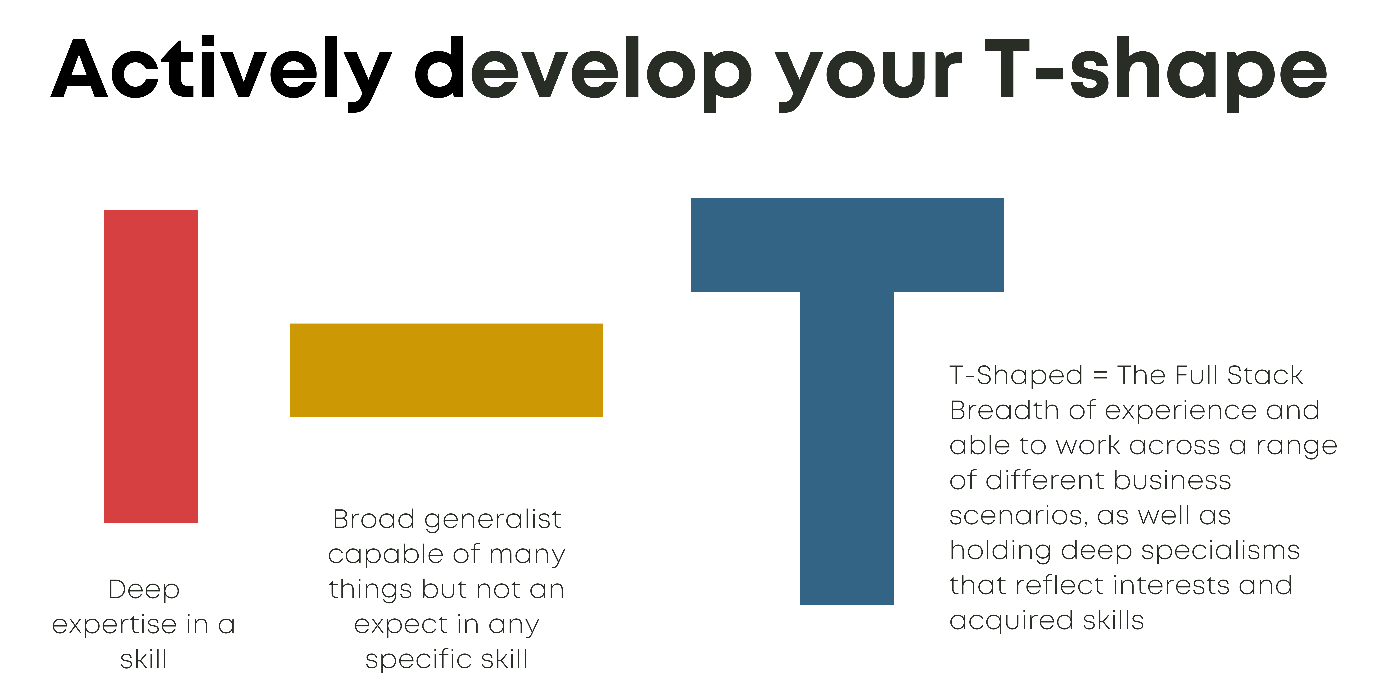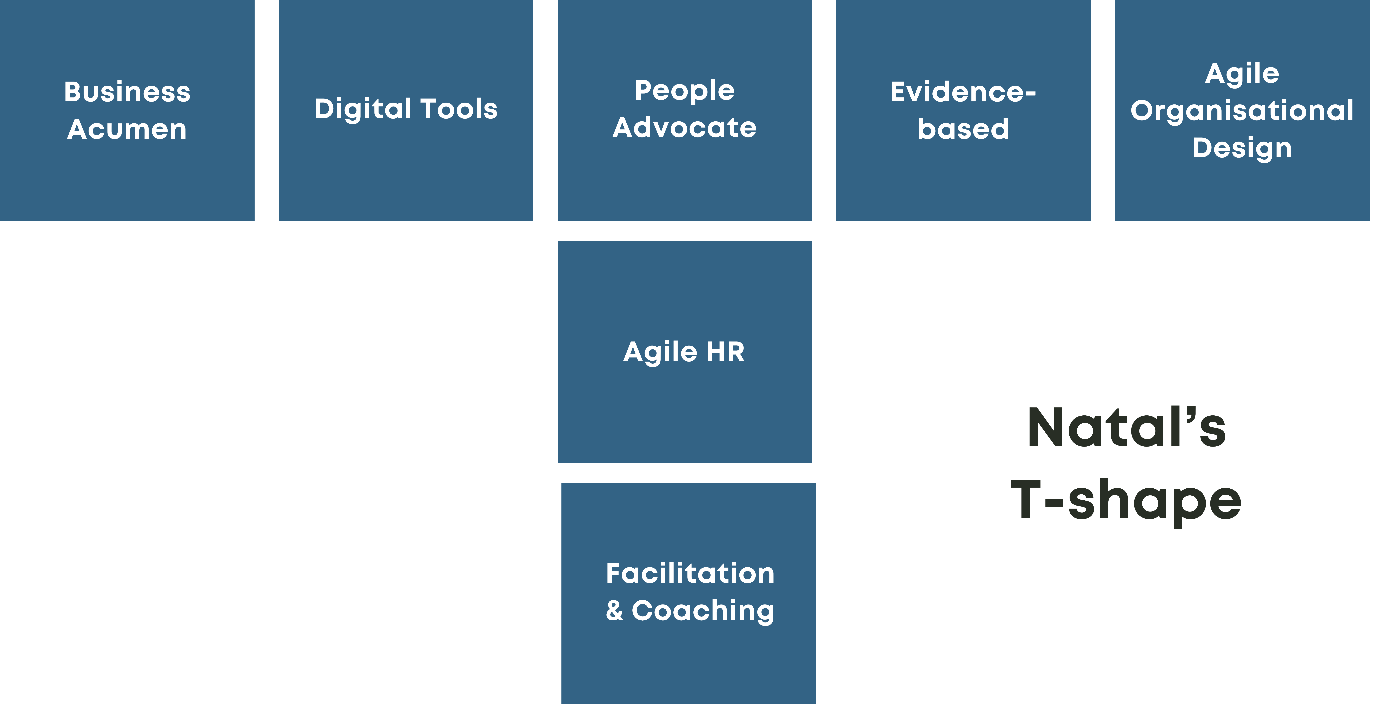Learn about purchasing for teams
Using Agile to Build Your Career & Stay Relevant in an Ever-Changing Job Market

Agile values are now fundamental to how organisations adapt, and as the world of work evolves, the concept of career is radically transforming. Increasingly, modern business demands for people with an agile mindset and who are customer-centric, collaborative and able to network as part of multi-skilled teams. Candidates must have the ability to respond and adapt to ever-changing environments, deliver value at speed, visualise work, and ruthlessly prioritise requirements.
Consequently, in order to thrive, you must see your agile career as an agile adventure. Embrace the idea that you can continuously build skills by working through iterations and mini life-projects. Forget the career ladder — an agile career is about cycles of moving up, down, sideways, and being in the best position to grasp opportunities as they arise.
The principles in the Agile Manifesto are now directly applicable to job descriptions globally. This is just one of the many trends the Covid-19 pandemic has served to accelerate. In their report, “Thriving after Covid-19: What skills do employees need?” (July 2020) McKinsey identifies the following requirements of candidates:
-
Ability to operate at pace in a fully digital environment
-
Cognitive skills for redesign and innovation
-
Social and emotional skills to ensure effective collaboration, management, and self-expression
-
Adaptability and resilience to thrive post-Covid-19 and beyond
In essence, agility helps you solve complex problems and complexity sums up modern business.
5 Actions to Drive Your Agile Career Adventure
You can drive your own agile career adventure by:
-
Actively developing your T-shaped skills
-
Building your career development backlog
-
Creating learning pathways through side hustles
-
Articulating the value you deliver
-
Embracing your own feedback loop
Let’s dive into each in a bit more detail with some practical exercises to help you.
1. Actively develop your T-shaped skills
Depending on who you ask, the phrase ‘T-shaped person’ was coined in the ‘90s by Tim Brown, CEO of IDEO Design Consultancy, or by McKinsey & Company in the ‘80s. Either way, the vertical bar on the letter T represents the depth of your skills and expertise in a single field. Whereas the horizontal bar is your breadth or ability to collaborate across disciplines with experts in other areas and apply knowledge to areas beyond your primary field.
According to Jason Yip, a senior agile coach at Spotify, since most tasks in our workday don’t require an expert, the majority of tasks can be covered by T-shaped team members. Also, because the skills and experience of a T-shaped person aren’t limited to a single niche, they can contribute to a wider range of projects across the organisation. A T-shaped team doing cross-functional work also encourages cross-training, which means leaders can do more with the same number of people. These benefits mean organisations across the globe are now in search of T-shaped people to strengthen their T-shaped teams.


Ultimately, agile teams are underpinned by T-shaped people, so developing your T-shape makes you more employable.
Action: Consider your own T-shape and identify one general capability and one deep specialism that you already have. Now identify one general capability that you would like to develop or strengthen.
Quick Case Study
A senior product manager with 10 years of experience working for major corporations was considering a move into an HR or People Development type role but was worried that they lacked experience and qualifications in the profession. At first, they assumed it would be necessary to go and complete a university HR program. However, following some discussions, they realised they could take advantage of the skills they already had to make more of a sideways move. So, instead they started to explore product related roles within HR-themed environments like tech companies selling products like a peer feedback app or coachbot into an HR-themed market.
2. Build Your Career Development Backlog
Traditional career development has commonly been presented as a one- to five-year plan, often set out with predefined training, qualifications and your next intended role. This method is ill-suited to complex business environments as it doesn’t allow you to adapt and flex as opportunities come along.
A more dynamic approach is to use a career development backlog. This helps you to see your development in smaller increments, which are easier to commit to and get done. A backlog also allows you to reprioritise goals and areas of focus as time goes on. The use of Kanban or Scrum to manage the backlog further enhances the approach by helping you visualise this career development.
To help strengthen your T-shape, write up learning and development actions in the form of backlog items. These can be anything from finding a mentor to completing some LinkedIn Learning. You can even set sprint goals with the aim of developing specific skills or experiences within a timeboxed period.
Don’t forget to consider your ‘Definition of Done' for your career development backlog items. For example, evidence that you can apply the skill you’ve learned, such as being able to explain it to someone else.
As we know from working agile, you can’t do everything at once, so prioritise the most valuable thing to do at any one time. If a new opportunity arises, you can jump on it!
Action: Consider your current T-shape and prepare learning and development actions for your backlog that will help to strengthen it.
3. Create learning pathways through side hustles
A crucial element of modern career development is to generate multiple learning pathways and build healthy networks that lead to future job opportunities. To do this, embrace the side hustle.
A side hustle can be anything from freelance work to volunteering. What might seem unrelated to your current job or career pathway may greatly strengthen your T-shape by broadening your experiences. Think of them as mini experiments; and to maximise results, try several things at once. Examples include consulting projects, community volunteering, side part-time gigs, public speaking and hobbies.
Side hustles also link neatly to Charles Jennings’ 70/20/10 core learning model, which states that 70% of learning is through experience on the job, 20% through relationships, and 10% through formal classroom learning. Lastly, side hustles are a great way to spot job trends and offer clues on how to repackage your personal brand based on the skills needed in different job markets. You might even earn some extra income ;-)
Action: Do you have a side hustle? If so, what skills and experiences does the side hustle help you develop?
Related Article: Why should non-developers attend hackathons to get agile experience?
4. Articulate the value you deliver
Practice talking about the value you offer a team and business. Don’t just describe skills and experiences, tell a story. Think more like a Product Owner and how would you measure the impact you’ve had in a job or work project. For example, did you help the business solve a complex problem and enhance the customer experience? If so, what evidence can you share to demonstrate this impact, such as data, metrics or revenue generated?
Being able to articulate the value you deliver is crucial for CVs and interviews.
Action: Ask the “so what?” question about any major skills or experiences listed on your CV. For example, if you solved a problem in a recent project what impact did this have on the business and why does it make you more hireable?
Related Article: How to Write a Great Personal Statement
5. Embrace your own feedback loop
Feedback sits at the heart of agile, drives continuous improvement, and is a crucial component of learning agility. Linking this back to your career development backlog can drive real change and practical progress.
Although it’s difficult, start with self-reflection. Even experienced facilitators can find it hard to accurately gauge how well or badly a talk or session went. Next, seek out feedback from peers, mentors, coaches, managers, friends - even family, to continually improve your understanding of your own skills and development areas. Online articles and videos are also a useful way to learn from others, and aid self-reflection.
Action: Write down the names of two people you trust to give you meaningful feedback. Now, go and ask them!
What’s Next?
By taking these actions and developing your T-shape, not only will you be ready to articulate the value you can offer a new organisation in an interview, but you’ll be able to describe how you navigate different business scenarios and help to solve problems. In a competitive business environment, this is the kind of person leaders want on their team.
So, what’s your next step to accelerate your agile career adventure?
Looking for more agile resources to help you thrive in your agile career? Subscribe.
About the Author

Natal Dank helps you co-create awesome places to work. Following over a decade in senior HR roles, Natal is seen as a pioneer in Agile HR, and helps organisations build amazing employee experience, like a customer journey, full of moments that matter for their people and brand. In 2016 Natal hosted the first Agile HR Meetup in London, which has since grown into a regular worldwide event. A year later she co-founded the Agile HR Community and has recently published the book, Agile HR. Now, through PXO Culture, Natal is focused on modernising HR and people practices for the 21st Century.










